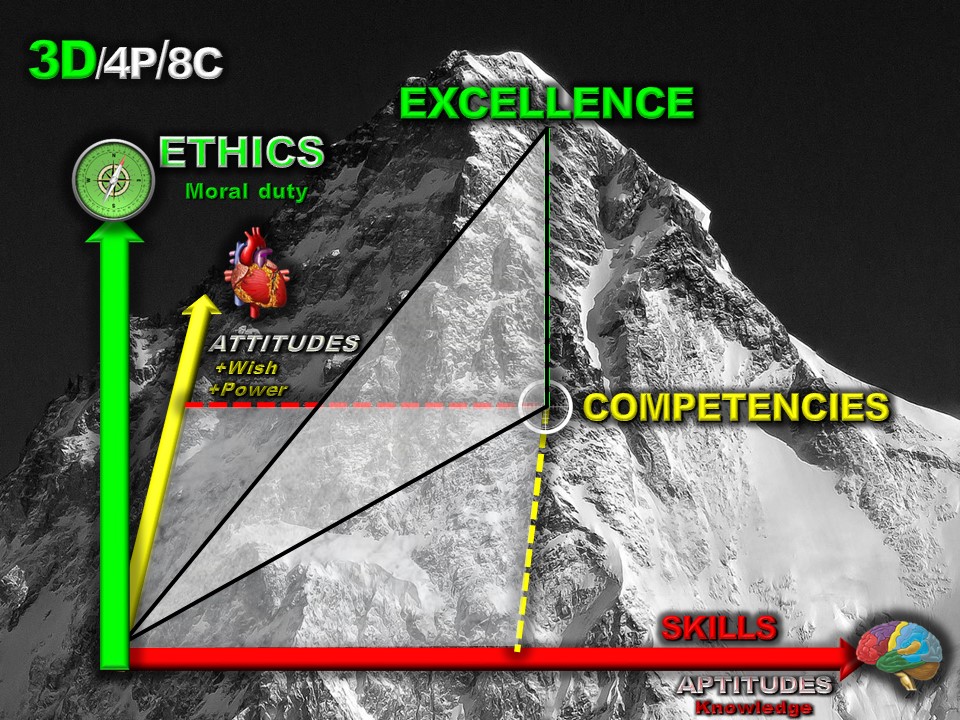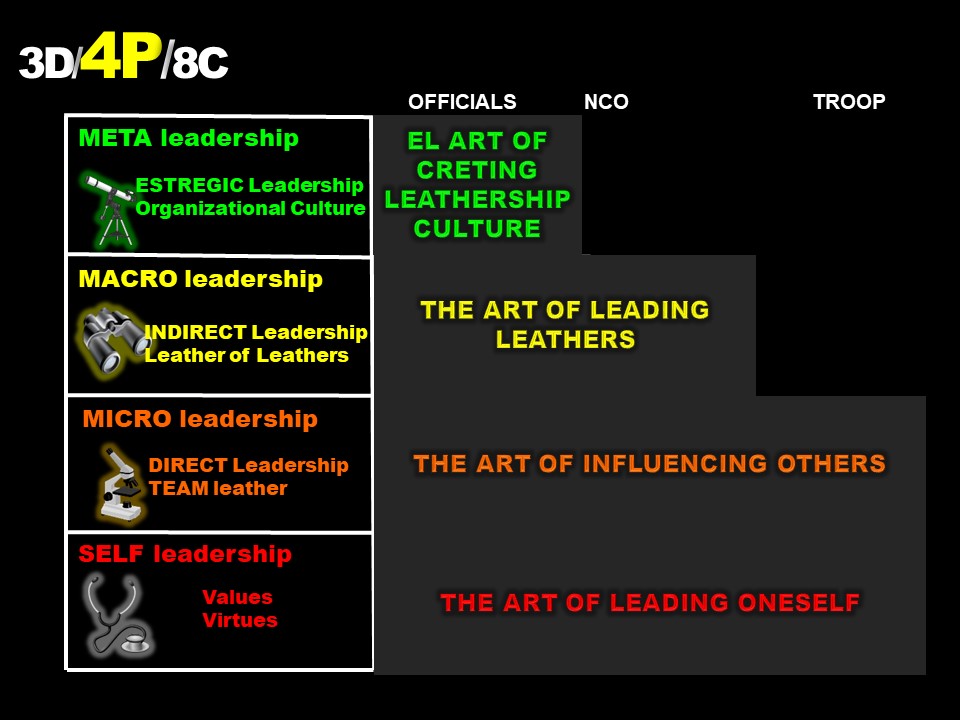World Geostrategic Insights interview with Ignacio Gabaldón García on the role of leadership and organizational culture in military education, the leadership model applied in the Spanish Army and whether leadership strategies applied in the military can also be used in companies.

Ignacio Gabaldón García is Colonel and Director of the Leadership Department of the Spanish Army War College. He is an expert in Military Intelligence and Military Leadership, also applied to the business environment.
Q1 – The Spanish Army (Ejército de Tierra) has updated its integrated training program to train officers with a strong emphasis on leadership. The ET War School itself has changed its official name to “Army War and Leadership School.” You head the School’s Leadership Department: why has leadership become such a fundamental element in the military? What is the role of leadership in the Army?
A1 – Leadership has always been a fundamental element in all the Armed Forces throughout history, although today it needs to be reviewed and updated. If there are two aspects that are fundamental to armies, it is military operations and leadership, although this does not imply exclusivity.
We do need to reflect on a new way of leading or, perhaps, to reflect on what was done naturally decades ago and has now been forgotten due to new technologies. It is obvious to say that the world is undergoing violent and dizzying changes, just as it is obvious to say that the speed of change and its importance are increasing. Before, the big ate the small and now it is the fast that eats the slow. We must understand and recognize that we have entered a chaos from which we are not going to get out; we are going to have to live and fight in this chaos, in the absolute lack of certainty and foresight; and we must assume that this is going to be the norm.
This demands a new way of leading and fighting and, I leave it to the experts, of doing business. Modern battlefields require leaders at all levels of the organization, leaders who, armed only with the purpose of command, act with their initiative, always disciplined to that purpose. Organizations must understand that technology must be used to decentralize decision making to those closer to the action or opportunity, rather than centralizing it at the top of the organization, as was traditionally done.
This paradigm shift and the understanding of the need to change the organizational culture, moving from an approach based on control and obedience to one centered on responsibility and initiative, are the factors that have led the Spanish Army to once again place leadership and organizational culture at the center of its military education. In recent years, our Army has promoted an organizational culture based on trust, which serves as a solid basis for the implementation of mission command.
Q2 – There are many definitions of leadership, how would you define it, does it have specific characteristics in the armed forces, what skills should a leader have, with particular reference to the military context?
A2 – There are many definitions of leadership and I prefer not to discard any of them, as they all have some inherent truth. However, I lean towards a definition that stands out for its simplicity and depth: to lead is to influence intangible aspects in order to modify tangible ones.
In the context of the Spanish Army, our leadership model is based on specific principles that deserve to be analyzed to better understand this definition. In any organization seeking to achieve its objectives, it is necessary to interact with two distinct worlds, each governed by particular rules and dynamics.
The first of these worlds is widely known; it is the world of reason, of resources, of regulations and procedures. It is the world of logic, of spreadsheets, where we become competent and efficient. At the macro level, this world equates to the world of strategy, which we have studied extensively.
The second world, on the other hand, is less explored but equally crucial. It is the world of emotions, interpersonal relationships, emotional intelligence, commitment and communication. This is where the true power of leadership lies, as it influences intangible aspects that have a direct impact on the tangible. At the macro level, this world corresponds to organizational culture, an aspect that often goes unnoticed but has a significant impact on organizational results.
Effective leadership, then, involves influencing these two worlds, leveraging both rational and emotional management to achieve palpable and sustainable change.
In addition, there is a third world that underlies the previous ones: the world of values. This world determines the meaning and purpose of the organization, transcending the individual to focus on the common good and ethics.

In short, the definition of leadership that I propose involves influencing the intangible aspects (such as emotional intelligence, commitment and values) to modify the tangible (results, attitudes, effort), and I believe that this definition encapsulates the complexity and depth of leadership in a concise and complete manner.
Q3 – How would you define the K2 leadership model?
We are aware that leadership is a very complex reality and, in order to make it more understandable, we have developed a model that is a representation of this reality, but without falling into simplism, which would make it irrelevant. We have called our model K2, as we understand that there is a parallelism between reaching the top of this mountain and achieving excellence in leadership; both are violently changing environments, those who have reached the top in both cases are cohesive teams, committed to the objective, with high technical capabilities….
Our model has 8 camps, 3 dimensions and 4 perspectives, which I will briefly describe.
The camps are places of knowledge and emotion that we must overcome to reach the top.

The camp that answers WHAT:
– THE base camp: where we analyze what is happening in the changing environment of the 21st century and we see what is the leadership that is the only thing that can bring light in these changes. We talk about ethical leadership, the strength of the necessary trust and, in short, we prepare ourselves to begin the climb.
Camps that respond to WHO leads:
– Self-leadership camp: the leader has to know himself and reflect on his values in order to be able to give voice to his values. In this camp we accompany our officers and NCOs in their self-knowledge, working on their brain (rational intelligence), their heart (emotional intelligence), their soul (transcendent intelligence) and their mentality. We show them the importance of the differences between people which is what determines the need for equipping.
– Equipping Camp: In the 21st century nothing is achieved in solitude, it is achieved in equipping, a word invented in the Leadership Department with which we express the perfect complementarity between the members of a team and the commitment of all to the mission. We study the new approach of the leader, who is no longer the best in the team, but the best for the team.
The camps that respond to WHY one leads:
– Camp mission: we address the current issue of organizational culture and our necessary evolution to mission-driven leadership; evolution from control and obedience to initiative and responsibility.
– Camp decision: we discuss this concept focusing on who makes the decision, how it is made and its ethics. We insist on the idea that following procedures is not deciding and that for it to be a decision there must be responsibility, risk and renunciation.
Camps that respond to HOW to lead (the leader’s tools):
– Camp the communication: we deal with the leader’s communication and how we achieve the greatest effect, knowing that communication must be a constant in the leadership of the SXXI, since everything communicates, especially emotion.
– Authority camp: always understood with Auctoritas, confidence. We give an in-depth review of natural authority, function, prestige and moral authority.
– Motivation Camp: where we deepen in macro motivation, working concepts such as happiness, success and pleasure, to reach the micro motivation where we analyze the extrinsic, intrinsic and transcendent.
In all the camps we deal with the 3 dimensions, because we understand that in all of them we have to teach aptitudes, generate attitudes and inspire values. And it is the latter that give meaning to the whole model. And if I had to highlight one, I would highlight the Spirit of Service, which is by no means exclusive to the military.

Finally, we have the perspectives as we are aware that the K2 model must be looked at in different degrees of detail depending on personal maturity and the degree of responsibility held in the organization. Thus we find ourselves with:

– Self-leadership perspective.
– Direct leadership perspective, close team, face to face.
– Indirect leadership perspective, leader of leaders.
– Strategic leadership perspective, creating organizational culture.
In short, a frame of reference for our entire Army, a common lexicon used by soldiers and generals alike, where each one applies his appropriate perspective, and which allows us all to have a community of doctrine and thought to understand a subject as complex as leadership. It also allows each one to make a self-examination and analyze which camps I manage better and in which ones I can improve.
Q4 – Can the leadership strategies applied in the military also be used in companies and other organizations?
Undoubtedly, the leadership strategies applied in the military are perfectly transferable to companies and other organizations. We believe that anyone who aspires to achieve objectives by working with teams must have a solid knowledge of leadership, as this discipline is fundamental in all areas. From a parent, to a school principal, to a politician at any level, to an entrepreneur, all pursue objectives that require the collaboration and commitment of others. On a broader level, leadership and organizational culture are fundamental pillars that every manager must understand. It is essential for leaders to understand how their decisions affect their company’s culture and how they must align it with business strategy to achieve success.
Leadership is equated with teamwork, while organizational culture is like the gears that bind teams together. More and more organizations, both public and private, are seeking to understand how we approach leadership and cultural change, recognizing the importance of these aspects to their organizational success.
Ignacio Gabaldón García – Colonel and Director of the Leadership Department of the Spanish Army War College.
Image Source: Official Facebook page Spanish Army







